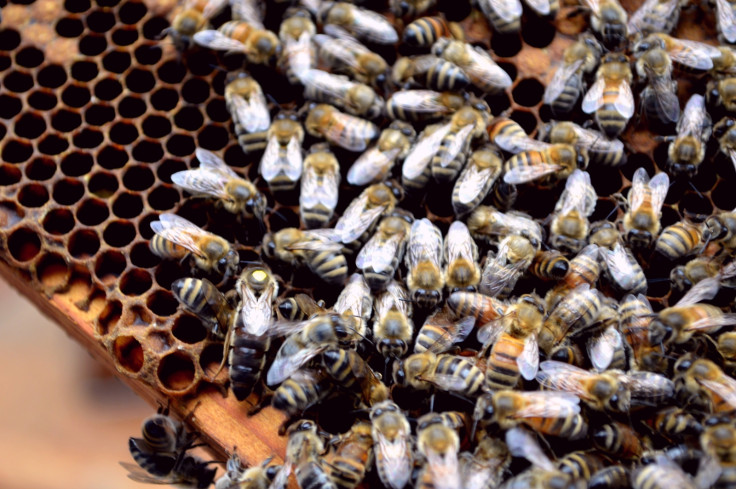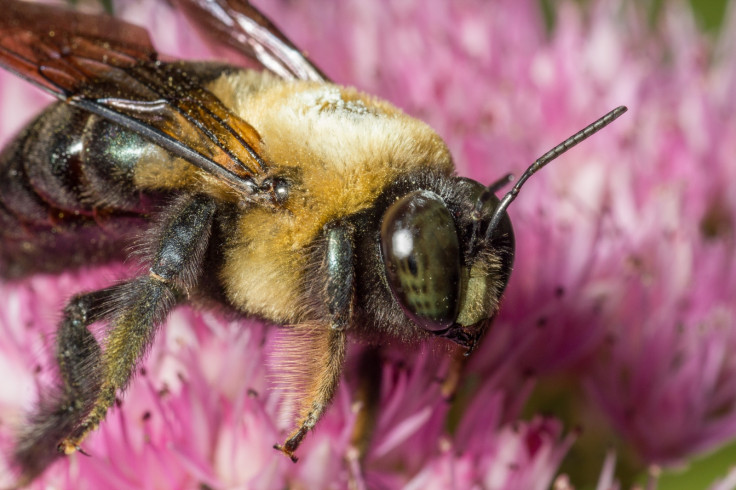What is killing bees? Why we should worry about Colony Collapse Disorder
Devastating decline in apian populations across the world is result of three factors, Prof Dave Goulson of Bumblebee Conservation Trust and Sussex University tells IBTimes UK.
The number of bees across the globe has been in decline for the past 50 years. The phenomenon is called Colony Collapse Disorder, which can kill off whole colonies of bees at once.
The disorder has hit commercial honey bee-keepers hard, with some keepers who farm tens of thousands of hives losing half their bee population in one year. But the disorder is also harming wild bees, with several species edging towards extinction.
IBTimes UK spoke to Dave Goulson, professor of biology at the University of Sussex and founder of the Bumblebee Conservation Trust, about why the bees are disappearing.
How many types of bee are there?
There are 20,000 known species. The honeybee is just one of them.
Are all species' populations declining or just a few?
Broadly, many species seem to be having problems. Honeybees, because they're looked after by people, get the most attention. If the colony dies, the keeper notices. In recent decades the frequency with which colonies die has become higher. Some winters, in particular, it's very high. In North America in recent winters, some keepers have lost very high proportions of hives.
What about wild bees?
Wild bees also seem to be becoming scarcer. Some have undergone big population collapses and a few have gone extinct. I guess the big picture is that we should be pretty worried about this – they pollinate our crops, they pollinate wild flowers. The world needs bees and if they're disappearing we've got a problem.

Why are they disappearing?
It's a combination of three factors. People might differ on the details, but most scientists would agree that habitat loss is the biggest long-term driver of wild bee declines. We used to have lots more flowers, to put it simply. In Britain we used to have about seven million acres of flower-rich grasslands – from hay meadow to chalk downs. They would have been chockful of bees. In the 20th century we got rid of about 80% of that habitat. Similar things have happened elsewhere in the world. It's the intensification of farming and the move to big fields of monocultures of crops.
Read more: 10 most endangered species on Earth in 2017
What's the next big factor making bee populations decline?
One is that we've accidentally spread bee diseases and parasites around the world, mainly through transporting honeybees. People move honeybees around from country to country and have spread bee diseases that happily transmit to wild bumblebees or other bees. That means that wild bees are often exposed to diseases that they have no natural resistance to.
It's similar to when the native peoples of the Americas first met Europeans 500 years ago – lots of native people died because they contracted European diseases. A very similar thing is happening with bees. And it's not just diseases but bloodsucking parasitic mites, which also spread diseases. It came from Asia originally but we've moved it all over the world.

And the last big factor putting pressure on bees?
The third big one, and the controversial one, is pesticides. This is where people get really heated. There's a lot of money at stake. Farmers use a lot of pesticides these days and many would argue they need all those pesticides to grow as much food as they do. The companies that sell them make a huge amount of money and have a huge interest in denying that their chemicals are harming bees. But there is lot of scientific evidence that a lot of pesticides in use are harming bees one way or another.
Which pesticides are thought to harm bees?
Most of attention has focused on one group – the neonicotinoids. This is one of the newest types of insecticide on the market. It's been around since the mid-1990s.
Why are neonicotinoids harmful to bees?
Neonicotinoids are neurotoxins, related to nicotine as you might be able to tell from the name. They basically attack the brain of the bees. They're really toxic to all insects – and that isn't really surprising as they're meant to kill insects. Sadly no one has invented an insecticide that only targets the insects we don't want but that leaves the bees alone.

How do these insecticides work?
The basic problem is that they're unlike most of their predecessors. They're systemic – that means they go into the crop and spread through it and get to all parts of the crop. So they get into pollen and the nectar. The bees who visit crops that have been treated with neonicotinoids will get a dose of neurotoxin. It only takes a pretty minuscule dose to harm the bee.
How miniscule?
The lethal dose for a honeybee is about four billionths of a gram. So one teaspoon is enough to give a lethal dose to 1.25 billion bees. In the UK we apply about 110,000 kilograms of neonicotinoids every year. That is potential harm to a lot of bees, so it's cause for concern.
How scientifically contentious is the issue of neonicotinoids now?
Most scientists would agree that the evidence is really convincing now, but there are some scientists working for companies in the chemical industry that would disagree. It's regarded as a bit of a contentious issue but the majority of independent scientists would say that the evidence is pretty clear. There's also pretty clear evidence that neonicotinoids are also linked to butterfly declines and declines of insect-eating birds.
It's a bit like climate change – it's widely accepted by most people that it really is happening and it's not something that's just been made up.
© Copyright IBTimes 2025. All rights reserved.






















